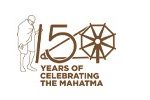CENTRAL GEOLOGICAL PROGRAMMING BOARD (CGPB)
Read full version of resolution dated 12.3.2009 on CGPB
The Central Geological Programming Board (CGPB) was established through Government of India Resolution dated 27th July, 1966. The CGPB was constituted primarily to co-ordinate activities on geological mapping and mineral prospecting, exploration and exploitation in the country, with the Geological Survey of India (GSI) as the nodal department and the State Geology and Mining departments and Central Government institutions as the participating members. Besides drawing up inter se priorities among various schemes of geological investigations and exploration for minerals in different parts of the country, the Board was also assigned the task of making broad recommendations on policy and HR development etc. in the Geosciences sector. Subsequently, to complement the activities of the CGPB State Geological Programming Boards (SGPB) were constituted in the States to co-ordinate geoscience activities within the State and to interface with the CGPB and GSI.
The announcement of the National Mineral Policy, 2008, and the emergence of a large number of newly established Central and State level organizations as well as research institutions in the scientific sector have also added urgency to the necessity of revamping of the CGPB mechanism. It has accordingly been decided to reconstitute the Central Geological Programming Board and its Subcommittees and to provide for better coordination between Central and State level stakeholders by encouraging the regular functioning of State Level Geological Programming Boards, setup by the State Governments to achieve the requisite synergy.
The CGPB has been reconstituted in the year 2009 as follows:
| 01 | Secretary, Ministry of Mines | Chairman |
| 02 | Additional Secretary, Ministry of Mines | Member |
| 03 | Director-General, Geological Survey of India | Member |
| 04 | Joint Secretary (Mineral Policy) | Member |
| 05 | Representatives (not below rank of Joint Secretary) from | Members (10) - |
| Department of Environment, MoEF | ||
| Department of Forest, MoEF | ||
| Ministry of New and Renewable Energy | ||
| Ministry of Earth Science | ||
| Ministry of Civil Aviation | ||
| Ministry of Water Resources | ||
| Ministry of Coal | ||
| Ministry of Steel | ||
| Ministry of Defence | ||
| Ministry of Science & Technology | ||
| 06 | Advisor (Minerals), Planning Commission | Member |
| 07 | Heads of Central Organizations | Members (23) |
| 08 | State Secretaries, Mining and Geology / Industry | Members (Directors, Mining & Geology would be Permanent Invitees) |
| 09 | Representatives of Industry | Members (10) |
| 10 | Sr.Dy. /Dy. DG, GSI in-charge of Wings, Regions, Map & Publication, Information Technology & Training Institute | Members |
| 11 | Dy. DG (In-charge CGPB Sectt.), GSI | Member-Secretary |
The Chairman can nominate a representative of any other organization related to Geoscience as a Special Invitee to a meeting of the Board or as a Permanent Invitee to all meetings of the Board.
The Central Geological Programming Board shall meet at least once in six months, and shall be responsible to:-
(i) help provide the general strategic direction of geoscience activity in relation to GSI and other stakeholders, and advise the Ministry of Mines on policy issues of geoscience.
(ii) effect programmatic coordination among central agencies in the sector and promote multidisciplinary/ multi-institutional approaches.
(iii) enable better interaction between central agencies and State level organizations for coordinated planning and execution.
(iv) help build training, Human Resource, and research capability within the sector particularly at State level and coordinate the capability for optimum use.
(v) identify new areas and new technologies for geoscientific activities, and advise on adoption strategies.
(vi) advise on Geoscience partnerships between GSI, and State and Central Level or other agencies including research and academic institutions.
(vii) actively promoting use of Information Technology in geoscientific activity, develop Geoinformatics with a strong spatial database; facilitate coordination among geoscientific agencies to develop common standards and sharable databases under the National Spatial Data Infrastructure(NSDI) architecture; and encourage wide and easy dissemination of geoscientific information through internet based technologies.
(viii) approve five-yearly detailed sub-sectoral targets on a rolling plan basis and annual programme on a State-wise basis.
The Central Board is supported by 12 Committees for the various subsectors as follows:-
| I | Ferrous Minerals (Iron, Manganese & Chromite, etc.) |
| II | Precious Metals & Minerals (Gold, Platinum Group of Elements, Diamond & Precious Stones) |
| III | Non-Ferrous and Strategic Minerals (Basemetal, Tin, Tungsten, Bauxite, etc.) |
| IV | Industrial & Fertilizer Minerals |
| V | Energy Minerals & Resources (Coal, Lignite & Geothermal) |
| VI | Marine Geology & Exploration and Coastal Geoscience |
| VII | Airborne Survey & Remote Sensing\VIII : Geology & Mineral Resources of North Eastern Region |
| IX | Geoscientific Investigations (Geotechnical investigation, natural hazards, climate change, Environmental Geology, Shallow subsurface Geology & Subsurface Hydrology) |
| X | Fundamental and Multidisciplinary Geoscience |
| XI | Geoinformatics and data management |
| XII | Geoscience for Sustainable Development |


